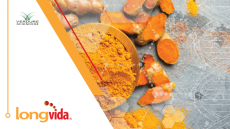Dodgy ingredients not currently in spotlight, but experts say formulators still churning away in the shadows

Experts contacted by NutraIngredients-USA said that activity in some categories of banned ingredients, such as DMAA and similar stimulants, seems to have receded. But it’s unclear whether this is because the attempts by the US Food and Drug Administration to get this ingredient and other similar ingredients off the market may have had some actual deterrent effect. Or, it could be that the market has just moved on to other ingredients with bigger sales potential.
DMAA (dimethylamylamine), a synthetic stimulant whose proponents claimed a natural source for the ingredient in geraniums, was once a huge seller. It was taken off the market after having been liked to fatal cardiac events suffered by several young soldiers. At least in this instance, FDA’s efforts seems to have had some effect.
Rick Collins, an attorney with the firm Collins Gann McCloskey & Barry who specializes in sports nutrition and performance enhancing drug cases, said an informal poll of his client base has led him to conclude that DMAA is a ‘dead issue.’
Battle against SARMs
But he said the focus of the ‘edgy’ community then shifted to SARMs (selective androgen receptor modulators). These are chemicals that can mimic some of the effects of anabolic steroids without technically transgressing the law that banned the sales of those ingredients. Subsequent regulations have addressed the SARMs issue specifically.
Efforts to shine a light on the SARMs epidemic extend back more than four years. And still, Collins said, new SARMs cases continue to crop up.
“There have been a number of prosecutions for SARMs. But I still get calls from people who seem to be unaware that SARMs are not FDA compliant and constitute illegal activity,” Collins said.
“I have conversations with people in the government about what to do about this. Their position is increasing the punishments and asking for stiffer sentences. I think the answer lies in a more consistent effort toward enforcement. It’s been very spotty and is not really enough to have the deterrent effect they’re looking for,” he said.
Collins said FDA’s frequent employment of warning letters in an attempt to police the sector is at best partially effective. Some of the marketers willing to sell SARMs or even more extreme ingredients won’t be deterred, and some may not even be aware that such warning letters have been issued.
“I think there are three categories. There are those people who know it’s wrong but don’t think they’ll get caught so they do it anyway. Then there have been some cases that have involved anabolic steroids, too, and there are people who think that if they hadn’t been selling the steroids FDA would never have gone after them just for the SARMs. So there is some confusion there,” Collins said.
“And then there are the people who blunder into the industry because the barriers to entry are so low and they really don’t know what a dietary ingredient is. I think that latter category is dwindling as there have been more and more high profile prosecutions,” he added.
Search for new stimulants is alive and well
Oliver Catlin, CEO of Banned Substances Control Group, an analytical lab and product certifier, said that while DMAA itself might be passé, the effort to find stimulant ingredients along the phenylethylamines line that might be able to claim some natural provenance is alive and well. After DMAA’s fall from grace, many supplements started to advertise extracts of Acacia rigidula on the labels. Then, after that ingredient in turn drew unwanted attention from FDA, formulators moved on to claiming to be using extracts of Senegalia berlandieri. In both cases, the plants have a naturally high alkaloid content that allows marketers to call out all sort of chemical names on the labels. Some of these ingredient lists include the open citation of ‘methylsynephrine,’ an ingredient that FDA said in 2017 “is a substance that does not meet the statutory definition of a dietary ingredient.”
“Those are still out there and are very obvious,” Catlin said. “They use a botanical name on the front of the label, and then put in all these chemical names on the ingredient lists and don’t even bother to disguise it.”
Shunted out of mainstream
Rob Wildman, PhD, of Tym Performance said he believes that FDA’s efforts have at least educated retailers and online sales platforms to the risks posed by these kind of products. This, in turn, has restricted to some degree where they can be sold.
“I would say that these suspect and questionable ingredients are less in the mainstream than they were,” he said.
Wildman cited new specifications put in place by Amazon and many brick and mortar retailers. These are demanding third parting testing and audit results and certifications before products can be sold in stores or go up online.
But the online world is a big and growing place, Wildman said. Amazon has a long arm, but it doesn’t reach everywhere.
“At the same time the dark side of the industry has still maintained itself in the world of ecommerce. You can still find SARMs. You can still find pro hormones,” he said.
Creating your own category
Both Wildman and Collins noted the most recent development in the dodgy ingredient game is to craft a new category that would sidestep FDA’s authority—or so the marketers of these products seem to believe.
“I think the bigger issue in the sports nutrition space now are peptides which are not being sold specifically as dietary ingredients but are being sold as ‘research chemicals,’” Collins said.
“I hesitate to even call attention to them because demand for these things drives supply. Some of these things have been considered not to be dietary ingredients and some of them are even classified as non ingestible,” Wildman said.
















